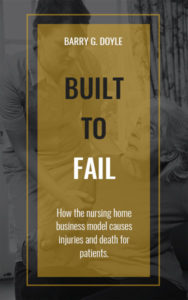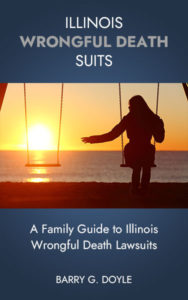The Illinois Department of Health has cited and fined Beecher Manor Nursing & Rehab Center when a resident with multiple sclerosis who required two-person assistance during care was left alone with a single staff member, causing her to slide out of bed and sustain multiple fractures. The facility’s own Nurse Practitioner confirmed that “if the resident required two CNAs for care, and there was only one present during care, it is an issue, and that the fall could have been prevented.”
The resident in question had multiple serious medical conditions including multiple sclerosis, various fractures in different stages of healing, stroke-related issues, lack of coordination, and reduced mobility. Her quarterly assessment showed she was “severely impaired in cognition” and required “substantial maximal assistance from the staff for bed mobility” and was “totally dependent” for toileting, meaning she “does none of the effort, the assistance of 2 or more helpers is required for the resident to complete the activity.”
The facility had documented the resident’s challenging care needs extensively. Previous nursing notes indicated that the resident “was combative with staff during care” and that “staff was able to change/put resident to bed with 3-person assist.” The notes specifically stated that “it is very difficult to provide care for resident with only 2-person assist due to her combative behaviors, so a third person is strongly encouraged.” The resident’s behavioral care plan noted that she “displays physical behavioral symptoms directed toward others, when staff giving care” including “hitting, kicking, pushing, scratching, grabbing.”
Despite these documented requirements, the incident occurred when a single certified nursing assistant was providing personal care to the resident alone. The nursing assistant explained that “I was going to give her peri care. Nobody was with me. She is always combative when giving care. She slid out of bed and was lowered to the floor.” The assistant described how “there was a mat in between hers and her roommates’ bed and I lowered her on to it” and then “called the nurse and another CNA, and we put her back in bed.”
Initially, the resident appeared uninjured from the fall. However, later that day she began “complained of pain in left leg” stating “pain is in left knee, leg and foot.” Pain medication and topical treatments provided no relief, prompting medical staff to order X-rays. The diagnostic results revealed multiple serious fractures including an “acute nondisplaced proximal fibula fracture,” an “oblique fracture of proximal fibula,” and a “left intertrochanteric impacted fracture of indeterminate age.”
The facility’s investigation acknowledged the severity of the incident. Their final report noted that the resident “has a diagnosis of multiple sclerosis with severe contractions” and described how “when the CNA turned the resident to her right side, she noticed the resident begin to slide.” The report stated that “the CNA immediately put the bed in the lowest position to lessen the impact of the resident sliding to the floor.”
Following the incident, facility staff confirmed that proper protocols had not been followed. The Restorative Director acknowledged that the resident “needs two staff assistance during care” and noted that “the resident does not like to be changed and has scratched CNAs during care.” Most significantly, the facility’s own Nurse Practitioner provided a definitive assessment of the situation, stating that “the resident sustained the fracture as a result of the fall” and confirming that “if the resident required two CNAs for care, and there was only one present during care, it is an issue, and that the fall could have been prevented.”
In response to the incident, the facility implemented several interventions including providing “bilateral floor mats down when in bed,” ensuring the resident would “receive a wider bed for better bed mobility assistance,” and requiring that the “patients bed must be in lowest position when in bed.” However, these measures came only after the preventable injury had already occurred to a vulnerable resident who was dependent on staff following established safety protocols.
One of our core beliefs is that nursing homes are built to fail due to the business model they follow and that unnecessary accidental injuries and wrongful deaths of nursing home residents are the inevitable result. Our experienced Chicago nursing home lawyers are ready to help you understand what happened, why, and what your rights are. Contact us to get the help you need.


